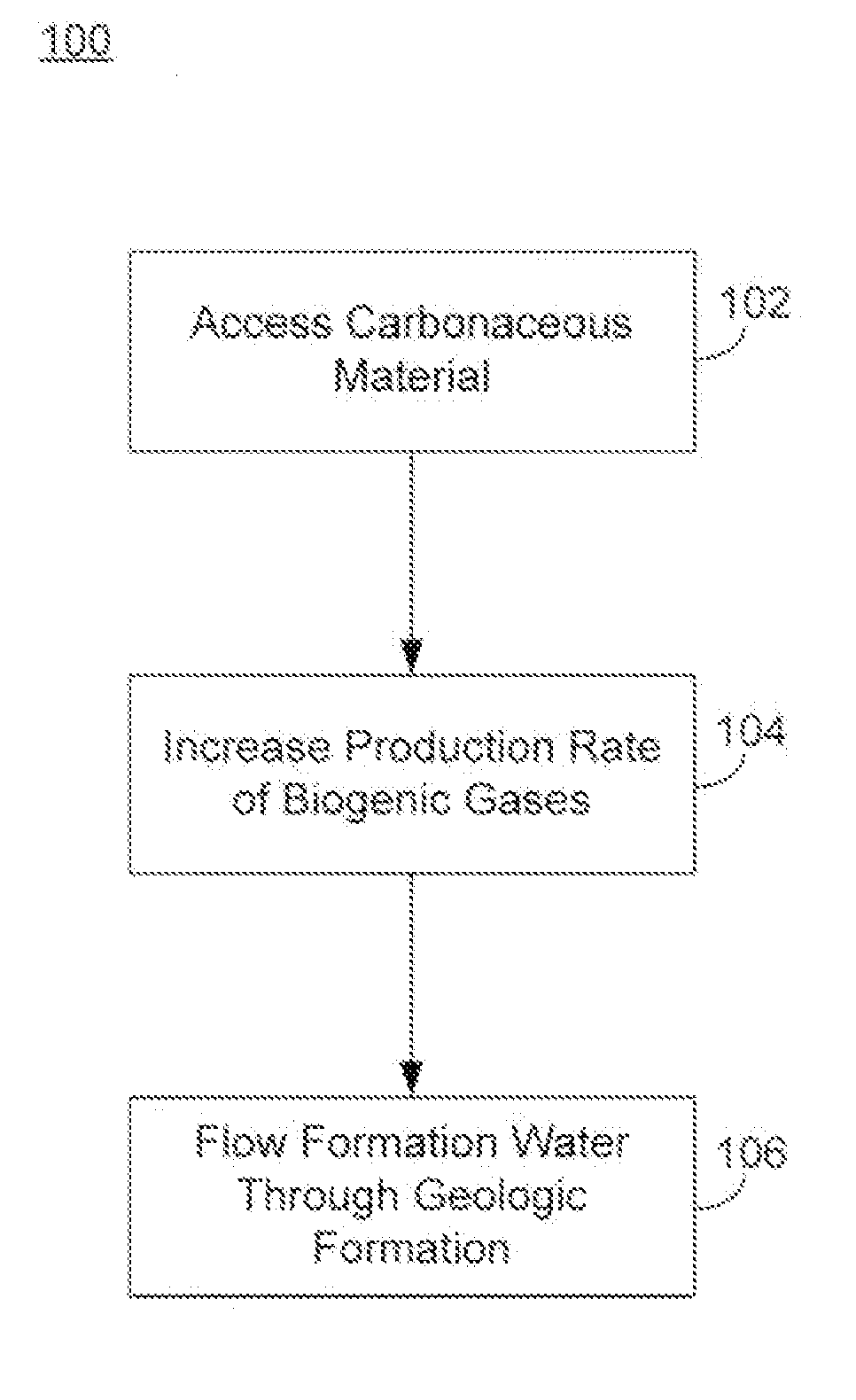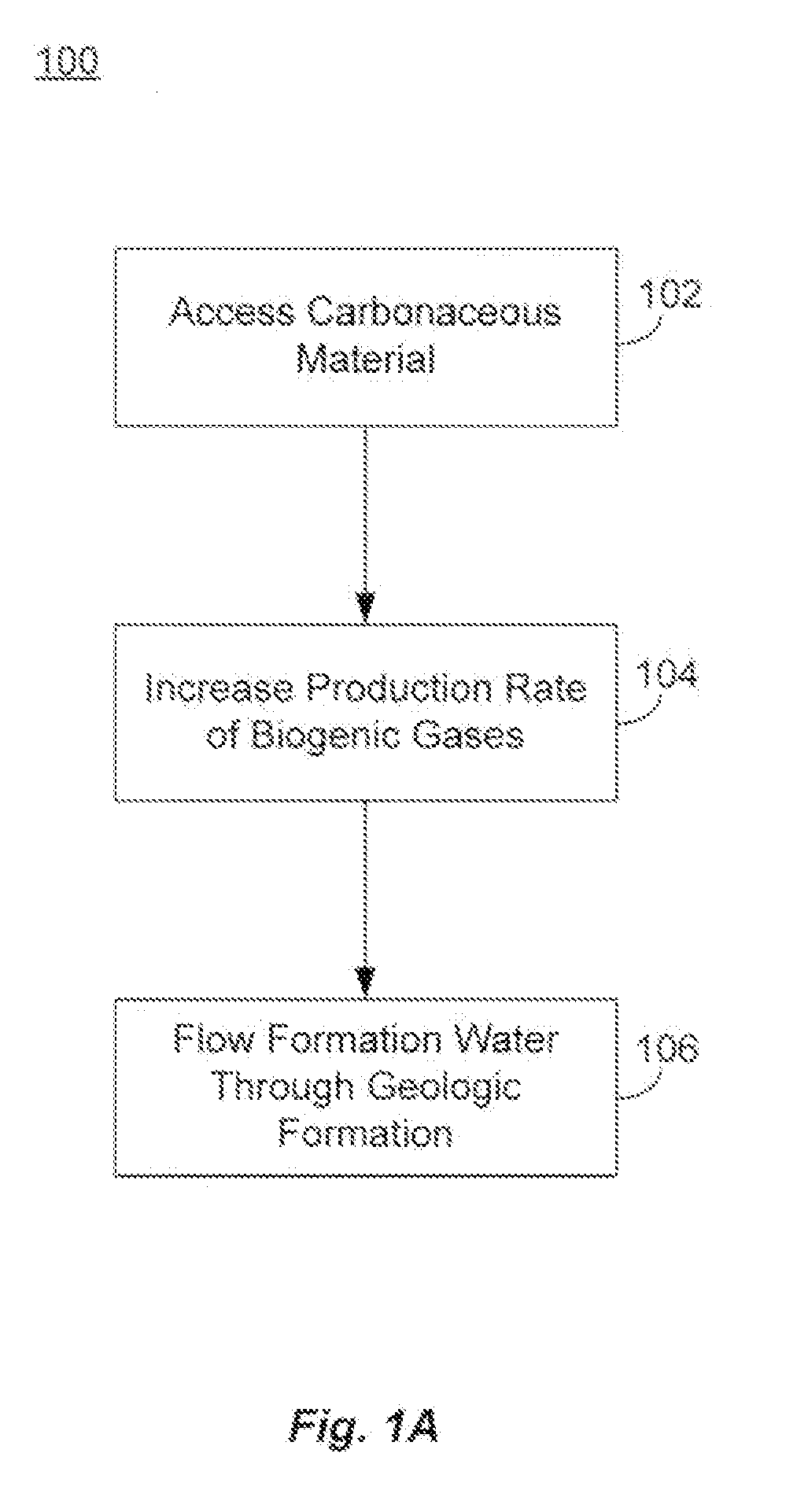Biogenic fuel gas generation in geologic hydrocarbon deposits
a technology of geologic hydrocarbon deposits and biogenic fuel, which is applied in the field of geologic hydrocarbon deposit biogenic fuel gas generation, can solve the problems of increasing the cost of recovery process, affecting the growth rate of the population, and the perception of relatively unpopulated water, so as to increase the rate of biogenic gas production and increase the rate of population growth
- Summary
- Abstract
- Description
- Claims
- Application Information
AI Technical Summary
Benefits of technology
Problems solved by technology
Method used
Image
Examples
Embodiment Construction
There is increasing evidence that the circulation of water in an anaerobic geologic formation increases the rate of biogenic gas production in the formation. While the water itself may not be a nutrient or activation agent for microorganisms producing the gas, the properties of flowing water as a transport medium for nutrients, activation agents and other compounds, as well as a transport medium for the dispersal of microorganisms, plays a role in enhancing biogenic gas production. Flowing water may also help carry away and dilute the waste products and other compounds that may have an inhibitory effect on microorganism grown and metabolic rates.
The source of the flowing water may come from outside the anaerobic formation, or may be found within the formation. Sources outside the formation may include treated water transported to the formation, and formation waters supplied from one or more separate geologic formations. Sources within the formation may include reservoirs of formatio...
PUM
 Login to View More
Login to View More Abstract
Description
Claims
Application Information
 Login to View More
Login to View More - R&D
- Intellectual Property
- Life Sciences
- Materials
- Tech Scout
- Unparalleled Data Quality
- Higher Quality Content
- 60% Fewer Hallucinations
Browse by: Latest US Patents, China's latest patents, Technical Efficacy Thesaurus, Application Domain, Technology Topic, Popular Technical Reports.
© 2025 PatSnap. All rights reserved.Legal|Privacy policy|Modern Slavery Act Transparency Statement|Sitemap|About US| Contact US: help@patsnap.com



